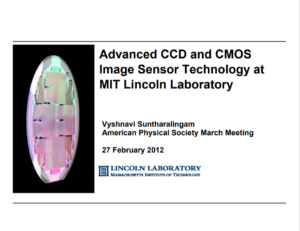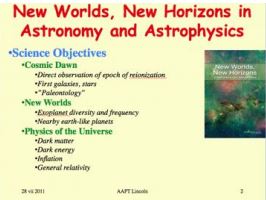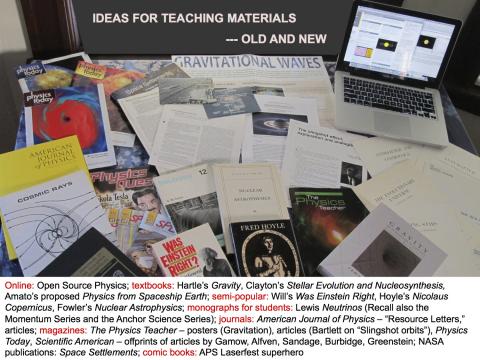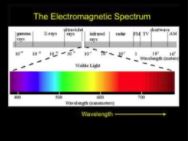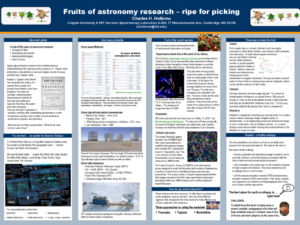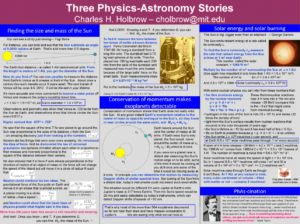Fifty years of advances in astronomy’s technologies and a dazzling array of discoveries have dramatically reshaped our view of the cosmos. And yet this revolution in our understanding barely appears in the undergraduate physics syllabus. It should be there. The stories that astronomy tells are engaging and exciting. They are also rich in physics. Everyone should know the story of the universe – what it is, how it came to be, where we are in it. Physics students should know the physics that underlies and justifies this story.
This year’s Physics Research & Education Gordon Research Conference is promoting efforts to include more astronomy in our teaching of physics. The theme of the conference is “Astronomy’s discoveries and physics education.” The conference will be held June 17-22, 2012 at Colby College in Waterville, ME. As it has done for the previous six physics research and education conferences, the American Journal of Physics will publish an issue devoted to the theme. To learn more about the conference and to apply to attend, go to <www.grc.org/programs.aspx?year=2012&program=physres>. There is more information about this and related events at <betterphysics.org>.
How can we adapt the physics syllabus to reflect the revolution in our understanding of the universe? How can we help physics undergraduates learn about these discoveries? Astronomy and physics are deeply entwined. Astronomy’s discoveries depend on physics; its technologies grow out of advances in physics. Astronomy’s discoveries affect physics, and reveal new physics and new and sometimes surprising consequences of well established physics. It is a challenge to imagine how to get these new discoveries into the undergraduate physics syllabus. The major goals of this conference are to explore the discoveries and technologies of modern astronomy, astrophysics, and space science and foster ideas for bringing their excitement into undergraduate and graduate physics curriculums.
The discoveries of contemporary astronomy, astrophysics, and space science astonish, amaze, entrance, and tantalize. Ingenious optics and advances and innovations in radiation detectors now bring the full spectrum of electromagnetic radiation from deepest space to our eyes and minds. We can now use almost all wavelengths of light to gather information from our solar system out to the edge of the Universe. From different wavelengths we learn that there is water on the Moon and Mars; there are Trojan asteroids in Earth’s orbit; the Sun is ablaze in X-rays; our local neighborhood has brown dwarf stars.
We also see hundreds of planets orbiting nearby stars, with many more to be found and myriads more beyond the limits of our observations. At the largest scale we see vast webs of filaments of clusters of galaxies in a pattern that carries the quantum imprint of the Universe’s earliest times. This pattern is the basis of the surprising new field of “observational cosmology.”
We see stars orbiting a four million solar mass black hole at the center of the Milky Way – our galaxy. There may be black holes at the centers of all galaxies, and these may account for astonishingly violent and energetic processes at the centers of some galaxies. There is now an entirely new astronomy of galaxies – they are born, evolve, and die. Galaxies interact if they pass near enough to one another; some sweep through each other in grand, majestic collisions that take an eon to occur.
Each advance in astronomy depends on physics. Each discovery invokes physics. Some of the discoveries change physics. Astronomy has taught us that neutrinos have mass. The motions of the stars tell us there is unseen matter among them — “dark matter” — different from the familiar stuff we experience on Earth and can see in the heavens. The accelerating expansion of the Universe tells us something has pushed the expansion, something we can’t see, something we don’t understand; we call it “dark energy.”
And light is not enough. We want to look outside the electromagnetic spectrum. LIGO, the Laser Interferometer Gravitational Wave Observatory, promises to open a new window on the universe by looking at its gravitational radiation — yet to be seen but surely there. IceCube and other neutrino observatories detect these elusive particles – some come from the Sun, some from deep space, some from Earth’s radioactivity, some from nuclear reactors, and some generated by cosmic rays. Super high energy cosmic rays provide another channel of information from the cosmos and signal the existence of unexplained events of immense energy.
A distinguished group of speakers will review many major discoveries and technologies of astronomy and astrophysics. They and members of the astronomy and physics education research communities will explore and suggest ways to use this material to enrich and enhance undergraduate physics education. As with all Gordon Research Conferences, advancing research frontiers is an important goal. But this conference also seeks to motivate participants to create astronomy-based teaching materials which will convey to students the excitement of these frontiers and entice physicists to use them as contexts for teaching physics in their undergraduate courses. The conference’s format — invited plenary sessions, contributed poster presentations, and generous amounts of unscheduled time for informal discussions in pleasant surroundings — promotes dialogue and cross-fertilization of ideas between educators and researchers at the forefront of their fields.
Who should participate? You … if you’re interested in fostering the use of astronomy’s discoveries to better teach physics to undergraduate and graduate students. If this challenge attracts you – whether you are an active researcher in astronomy, astrophysics, or space science, or a research associate (postdoc), or an author of books that present physics in a strong astronomy context, or a developer of curricula and educational materials, or a graduate or undergraduate student, or a two-year or four-year college or university faculty member with an interest in physics and astronomy – please apply to attend this Gordon Conference on Astronomy’s Discoveries and Physics Education. We hope to attract post-docs, graduate students, and two-year college faculty as well as faculty from four-year colleges and universities. We hope to have funds to help with the registration and travel costs of those who need this assistance.
Charles H. Holbrow (Colgate U and MIT) and Peter Shaffer (U Washington),
Co-Chairs, Physics Research & Education Gordon Research Conference
Colby College, Waterville, ME, June 17-22, 2012
